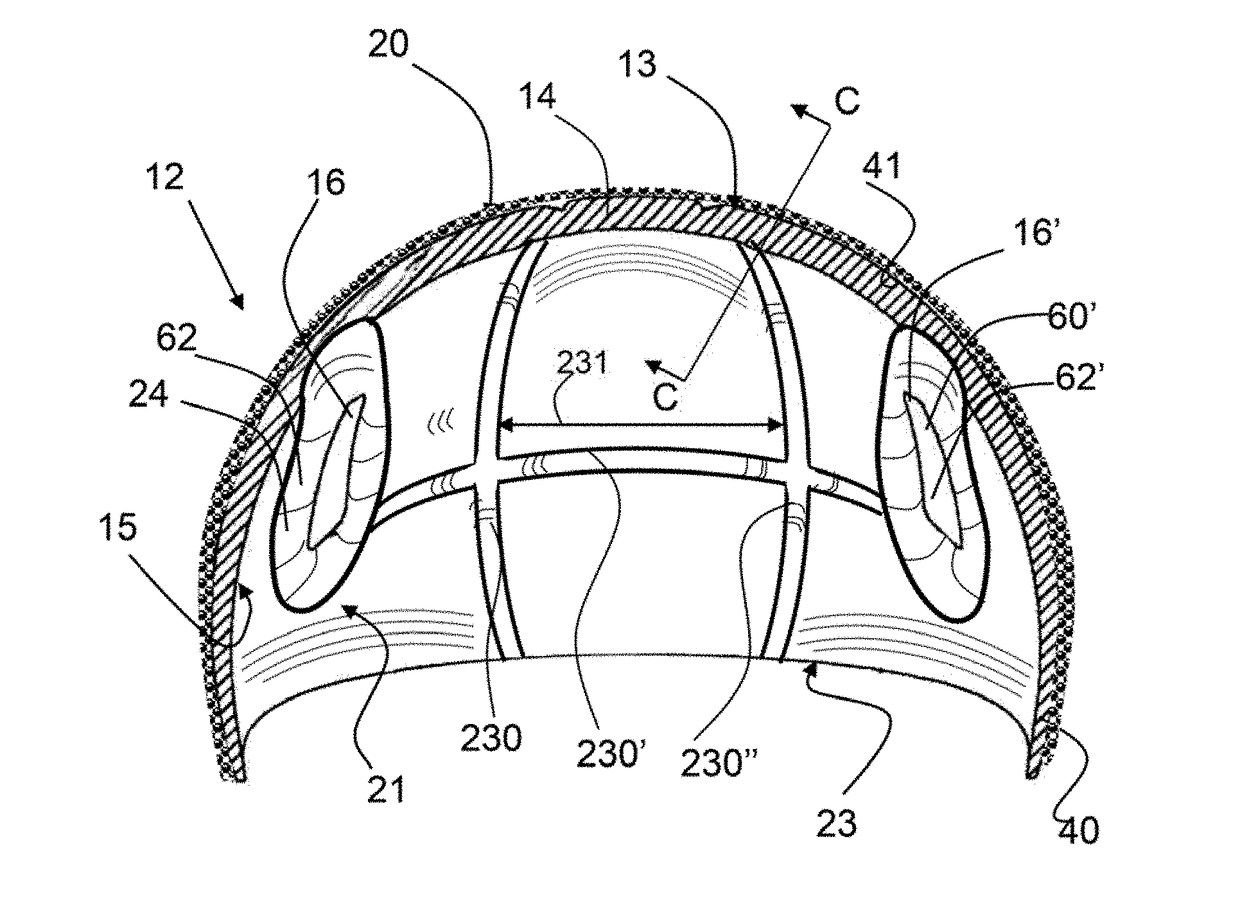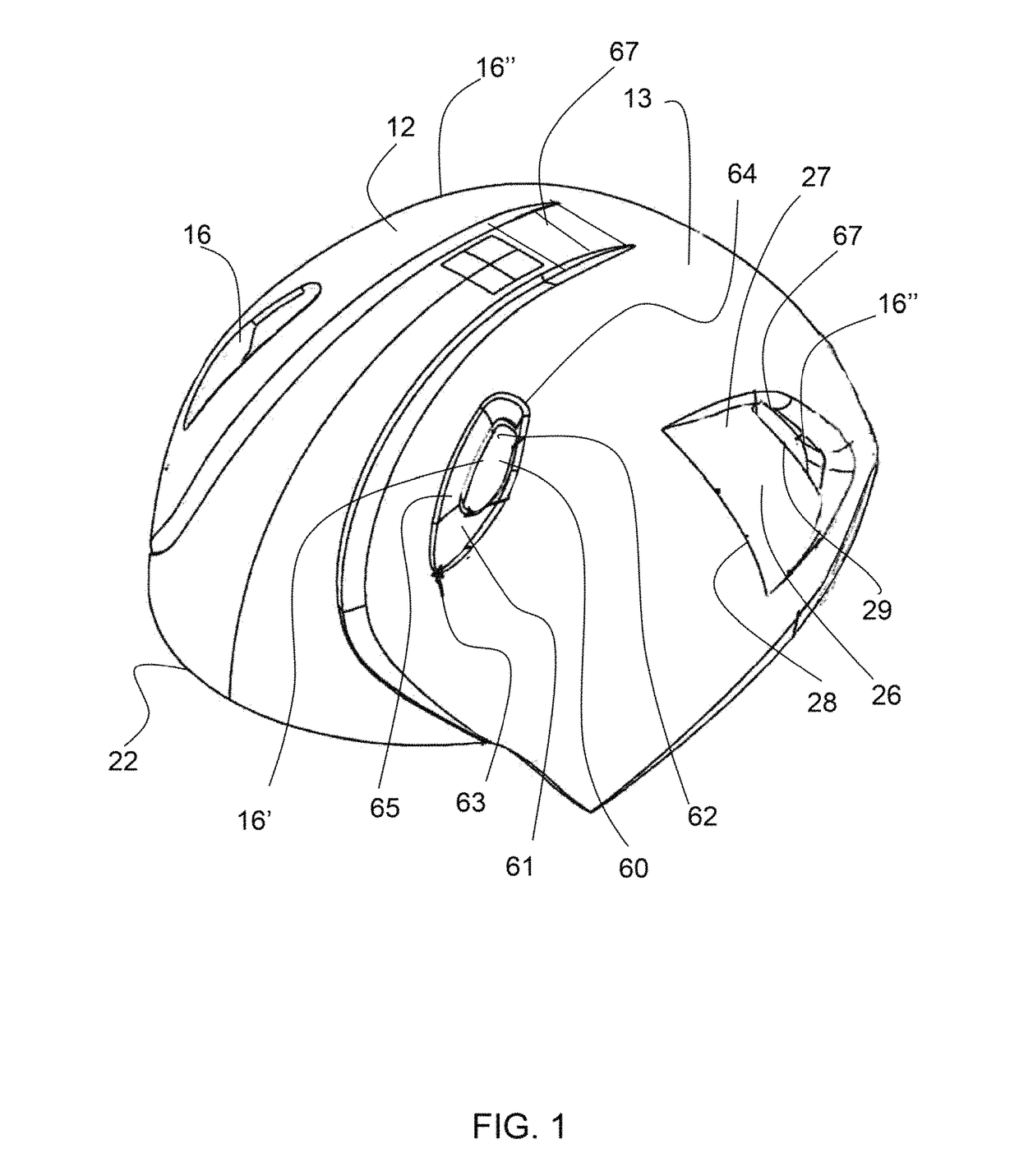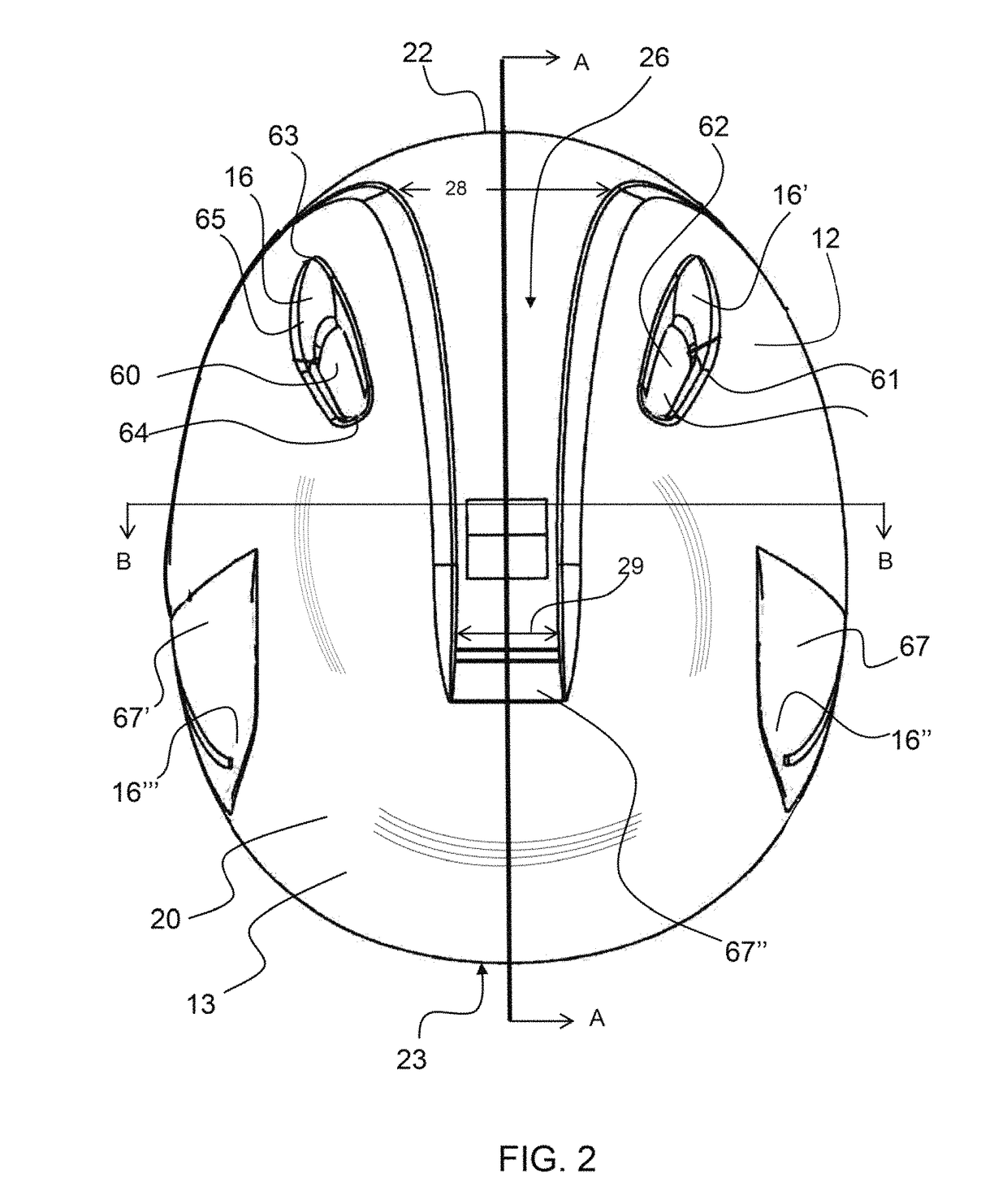Helmet
a technology for helmets and helmet covers, applied in helmets, helmet covers, headwear, etc., can solve the problems of torsional force caused by impact being very serious, and achieve the effects of reducing impact friction, and reducing rotational or spin forces
- Summary
- Abstract
- Description
- Claims
- Application Information
AI Technical Summary
Benefits of technology
Problems solved by technology
Method used
Image
Examples
Embodiment Construction
[0030]FIG. 1 shows an isometric view of an exemplary helmet over having a plurality of vents.
[0031]FIG. 2 shows a top down view of the exemplary helmet cover shown in FIG. 1, having a plurality of vents.
[0032]FIG. 3 shows a cut-away side view the inner surface of an exemplary helmet cover having attachment features and inner surface flow enhancer features.
[0033]FIG. 4 shows a cut-away view of an exemplary helmet cover having an attachment feature and an inner surface flow enhancer feature.
[0034]FIG. 5 shows an isometric view of an exemplary helmet cover having interchangeable pads.
[0035]FIG. 6 shows an isometric view of an exemplary helmet cover having a vent opening configured to at least partially align with a vent opening in a helmet.
[0036]FIG. 7 shows, a cut-away view of an exemplary helmet cover having an inner surface flow enhancer feature.
[0037]FIG. 8 shows a cut-away view of an exemplary helmet cover having ari inner surface flow enhancer feature that extends between two ven...
PUM
 Login to View More
Login to View More Abstract
Description
Claims
Application Information
 Login to View More
Login to View More - R&D
- Intellectual Property
- Life Sciences
- Materials
- Tech Scout
- Unparalleled Data Quality
- Higher Quality Content
- 60% Fewer Hallucinations
Browse by: Latest US Patents, China's latest patents, Technical Efficacy Thesaurus, Application Domain, Technology Topic, Popular Technical Reports.
© 2025 PatSnap. All rights reserved.Legal|Privacy policy|Modern Slavery Act Transparency Statement|Sitemap|About US| Contact US: help@patsnap.com



